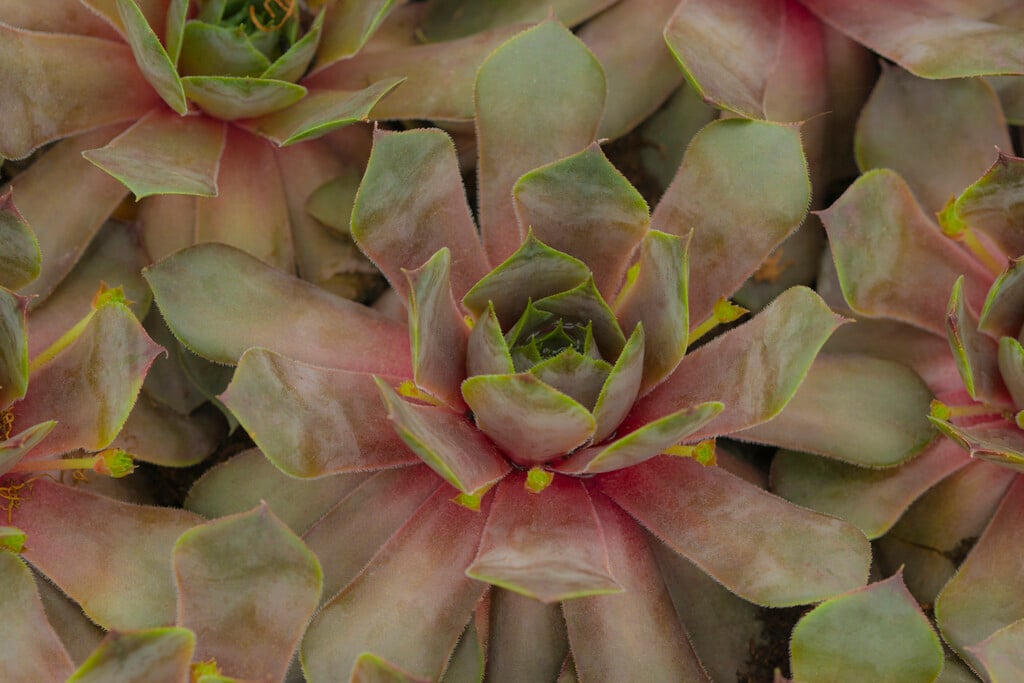Sempervivum ciliosum var. borisii
A mat-forming, evergreen perennial alpine with green foliage forming globe-shaped rosettes and fine white hairs covering the foliage. Pale yellow-green flowers may be produced on mature plants in the summer. A suitable variety for pots and containers
Size
Ultimate height
0.1–0.5 metresTime to ultimate height
2–5 yearsUltimate spread
0.1–0.5 metresGrowing conditions
Moisture
Well–drainedpH
Acid, Alkaline, NeutralColour & scent
| Stem | Flower | Foliage | Fruit | |
| Spring | Green | |||
|---|---|---|---|---|
| Summer | Yellow Green | Green | ||
| Autumn | Green | |||
| Winter | Green |
Position
- Full sun
Aspect
East–facing or North–facing or South–facing or West–facing
Exposure
Exposed or Sheltered Hardiness
H5Botanical details
- Family
- Crassulaceae
- Native to GB / Ireland
- No
- Foliage
- Evergreen
- Habit
- Matforming
- Genus
Sempervivum are evergreen perennials forming mats of fleshy-leaved rosettes, often attractively coloured, with star-shaped pink or pale yellow flowers in summer
- Name status
Correct
How to grow
Cultivation
Grow in moderately fertile well-drained soil in full sun. Protect from excessive winter wet. Suitable for rock garden, scree bed, wall crevice, trough or alpine house. See hardy cacti and succulent cultivation for further advice
Propagation
Propagate by offsets in spring
Suggested planting locations and garden types
- City and courtyard gardens
- Cottage and informal garden
- Gravel garden
- Patio and container plants
- Rock garden
Pruning
No pruning required
Pests
May be susceptible to sempervivum leaf miner, slugs, snails, and vine weevil
Diseases
May be susceptible to a rust
Get involved
The Royal Horticultural Society is the UK’s leading gardening charity. We aim to enrich everyone’s life through plants, and make the UK a greener and more beautiful place.
